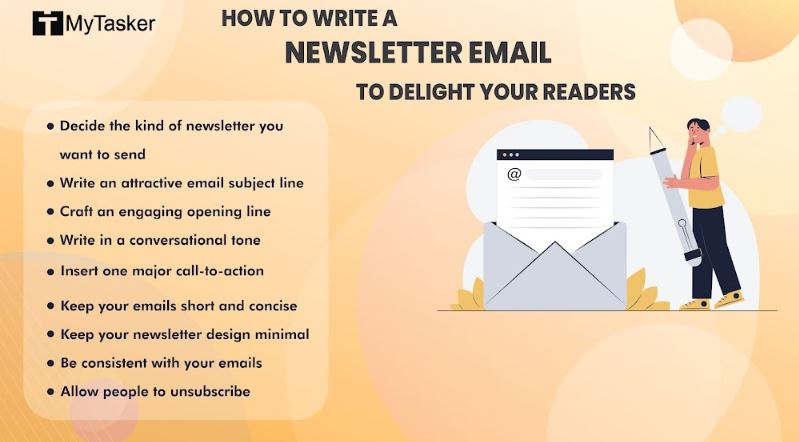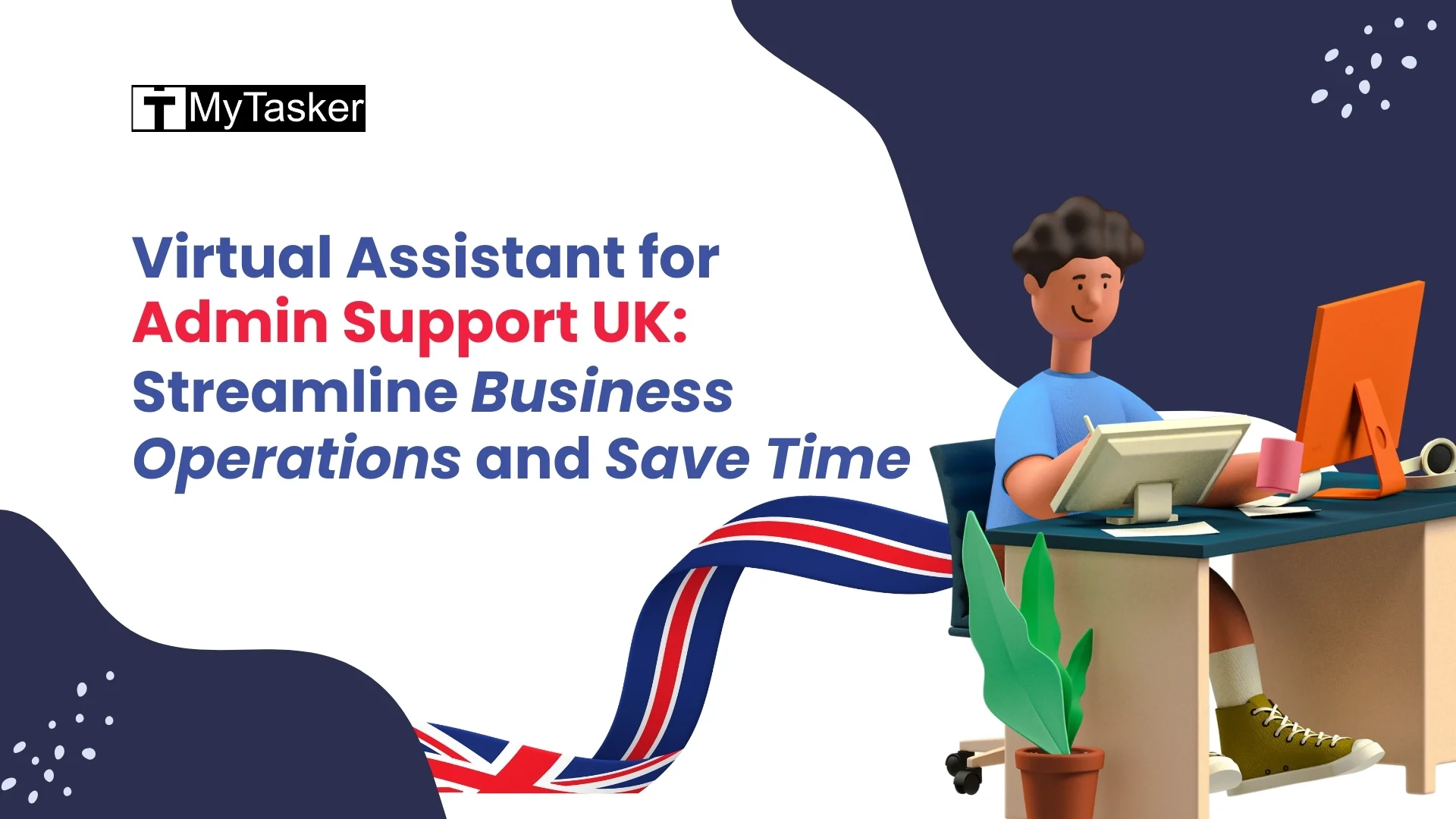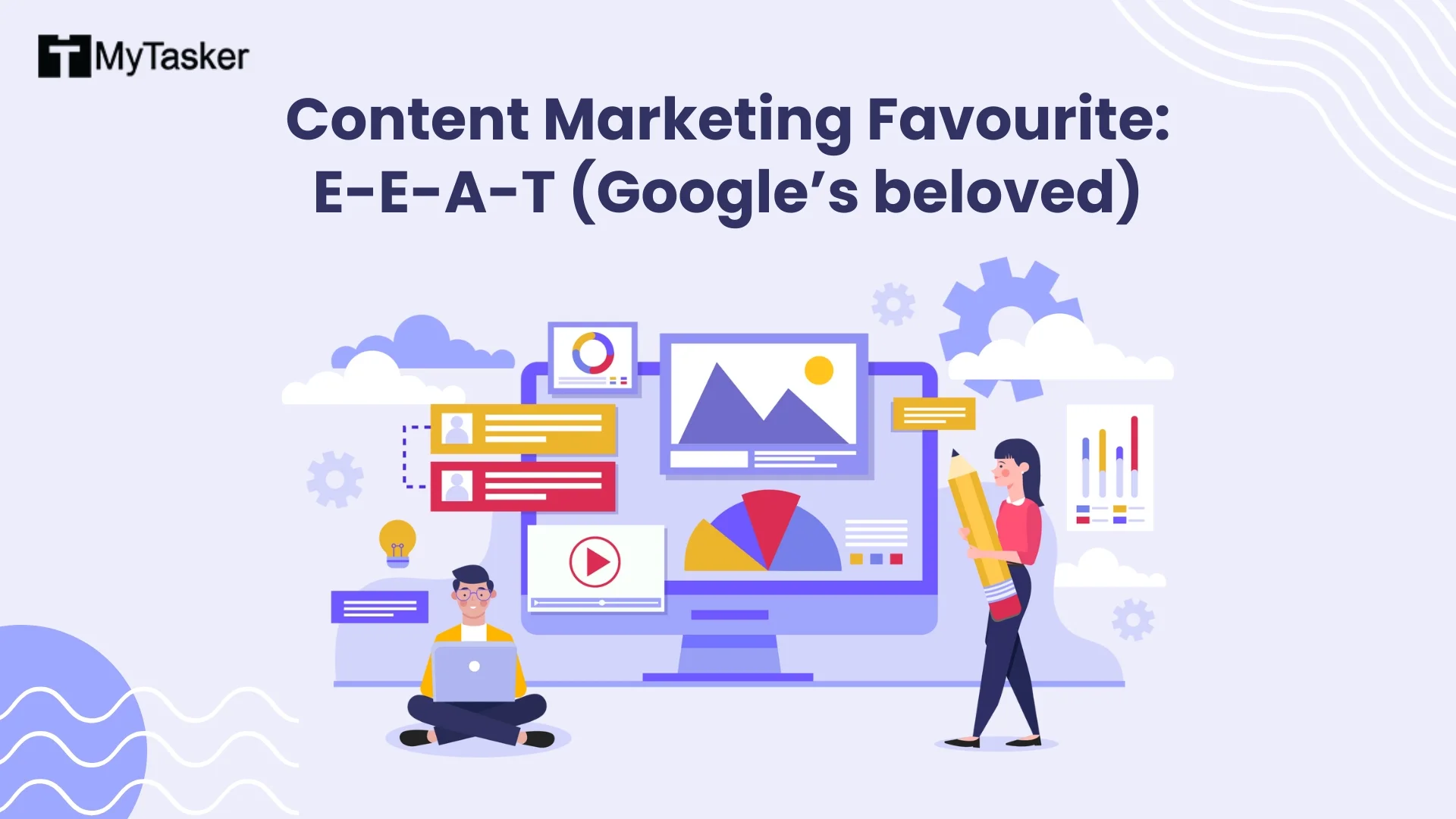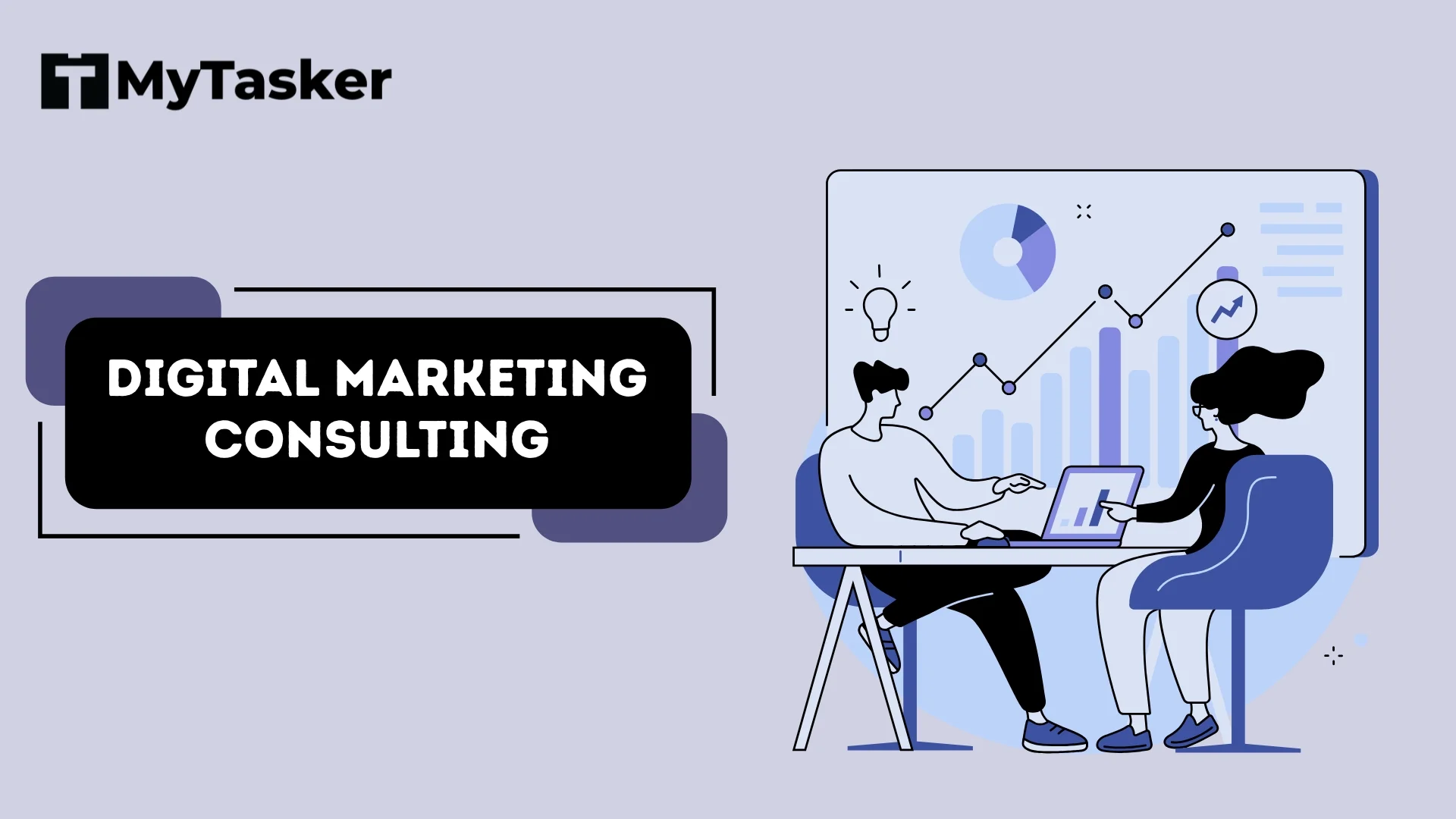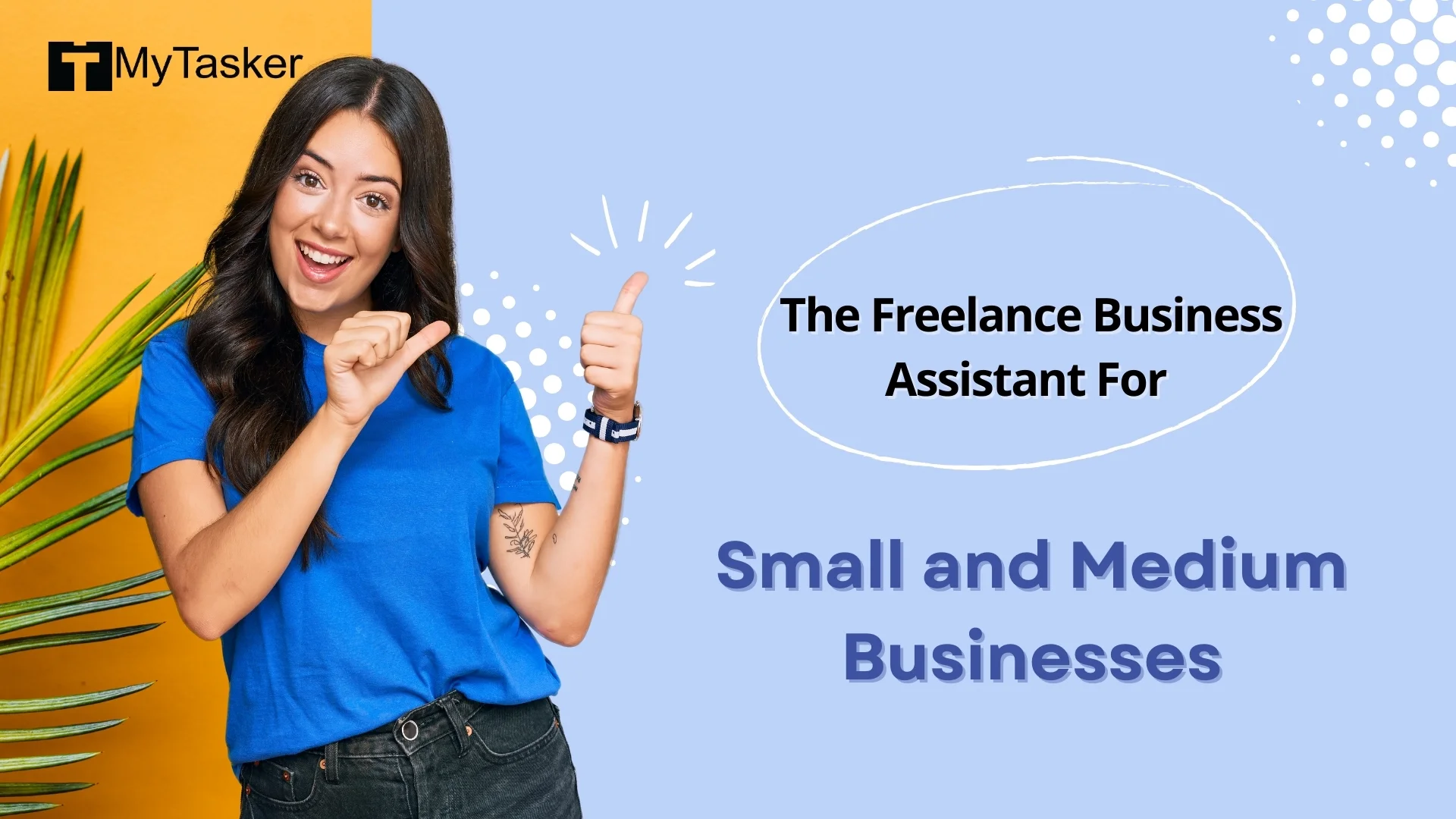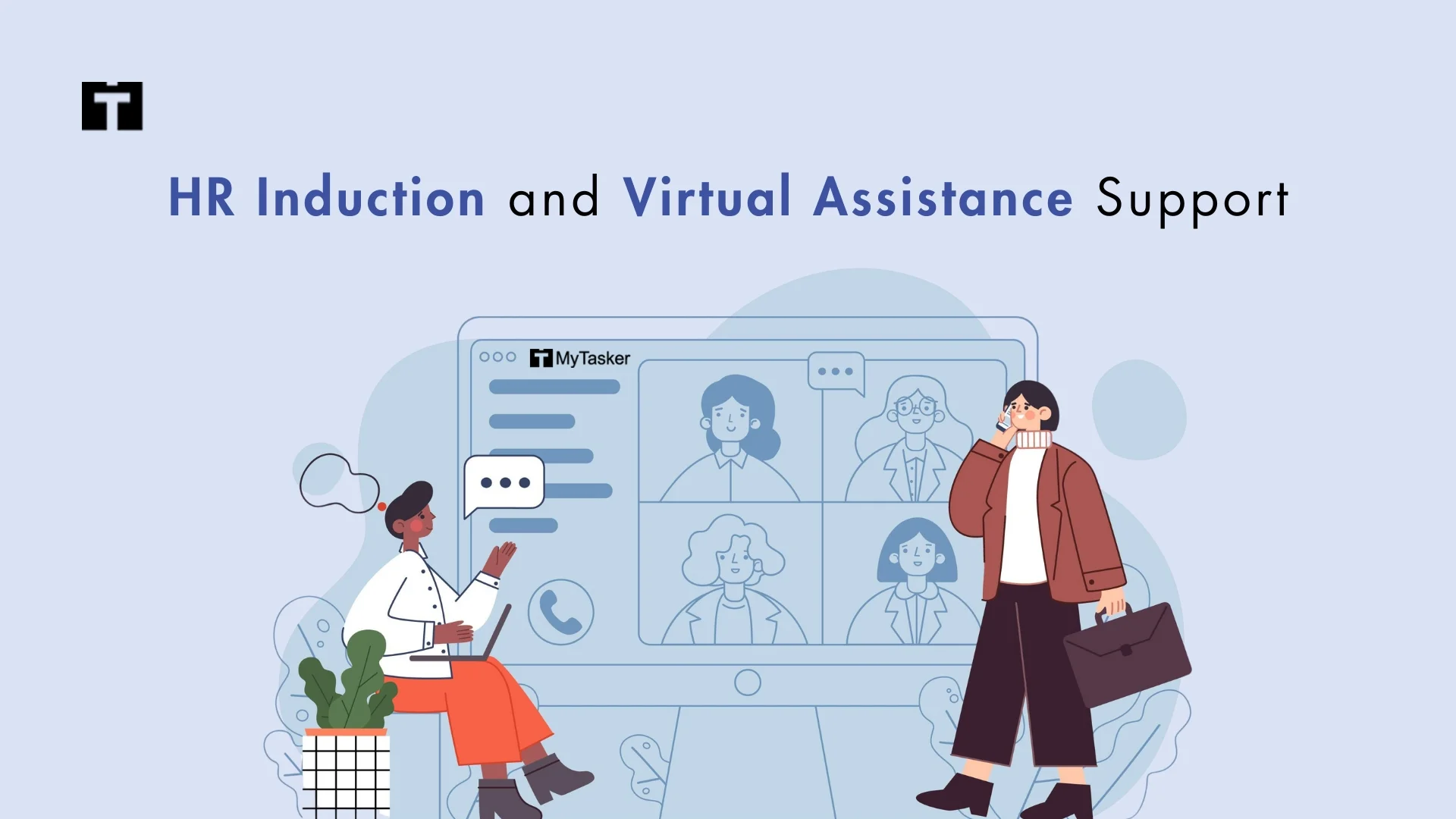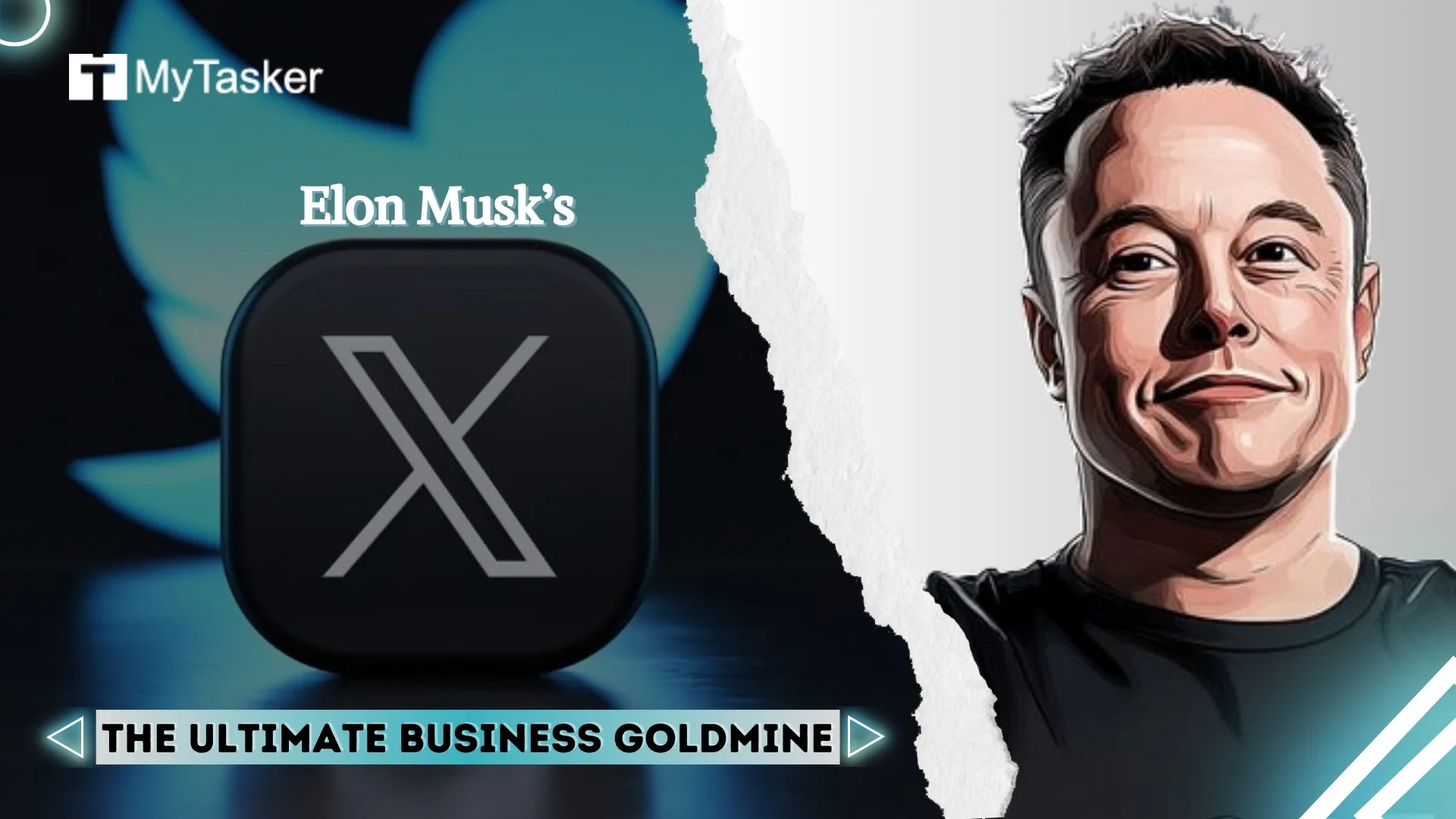Email newsletters are an effective mode of communication to market your products or services to your customers or prospects. However, you need to learn how to write a newsletter email correctly, in order to get more conversions.
Simply sending out a newsletter only to meet your monthly or quarterly requirement will not make the cut. You should write your emails in a way to get your readers to open and respond to your emails.
That is easier said than done, though.
To help you harness the power of email newsletter marketing, this blog post explains the following tips for writing a good newsletter:
- Decide the kind of newsletter you want to send
- Write an attractive email subject line
- Craft an engaging opening line
- Write in a conversational tone
- Insert one major call-to-action
- Keep your emails short and concise
- Keep your newsletter design minimal
- Be consistent with your emails
- Allow people to unsubscribe
Let us explore!
What Is a Newsletter?
A newsletter is an email delivering information about your brand to your prospects or your customers. It may include a list of your most popular content, promotions, news, tips, and announcements.
As an email marketing tool, a newsletter can help you nurture your relationship with your customers and ultimately increase your blog traffic.
How To Write A Newsletter Email Effectively
We have added some examples of email newsletters from famous brands to help you better understand what it takes to write a good newsletter. Take a look at these 9 tips for newsletter writing to get inspired:
1. Decide the Kind of Newsletter You Want to Send
The last thing you want to do in your email marketing campaign is to send an unfocused and cluttered newsletter.
You cannot have one newsletter catering to every aspect of your brand, whether it be company updates, events, blog posts, or product launches. You should know how to write a newsletter focusing on a single specific topic.
Thrive, for example, offers a newsletter rounding up their most popular blog posts every few days or so. They do not feature any PR stories or random events in that newsletter - centering the reader’s attention only on their blog posts.

2. Write an Attractive Email Subject Line
When you send out an email newsletter, you want the receivers to open it. Only then can the newsletter bring conversions for your brand.
For that to happen, you need to craft a creative and enticing subject line for your newsletter. A subject line such as “April 2022 Newsletter” will not give a reason to anyone to open your email.
Try personalizing your subject lines by using the recipient’s name, if possible.
A time-sensitive subject line, creating a sense of urgency, can also do the trick. It will tell the recipients that your newsletter contains useful content or breaking news that they should read straight away.
For instance, the subject lines that both Flipkart and YourStory Buzz use are bound to pique the readers’ interest. Once these newsletters land in the reader’s inbox, the subject lines intrigue them enough to make them open the email.
As you can see, both of the brands have used emojis in their subject lines to make them playful. Flipkart’s subject line “Psst! Let’s make a plan together?” makes you want to ask them, “What plan?”, so you open the email to find out.
Similarly, YourStory Buzz’s subject line in the above example makes you curious about the usage of the popcorn emojis. You ask yourself, “What is expanding across nine countries and counting?” and open the email for the answer.
3. Craft an Engaging Opening Line
Writing a newsletter with an enticing subject line is not enough. You need to create an amazing opening line, too. This is because the opening line, along with the subject line, gets visible before opening the email newsletter.
First and foremost, avoid starting your newsletter with, “Hello, my name is…”. It is a classic opening line that has since become boring.
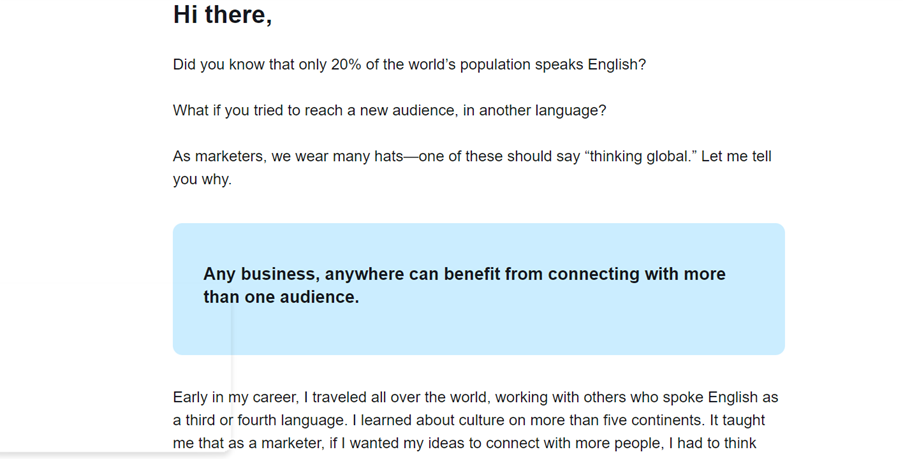
Semrush’s newsletter in the above example starts with a statistical figure: “Did you know that only 20% of the world’s population speaks English?” After that, they jump right into the meat of their newsletter, without beating about the bush.
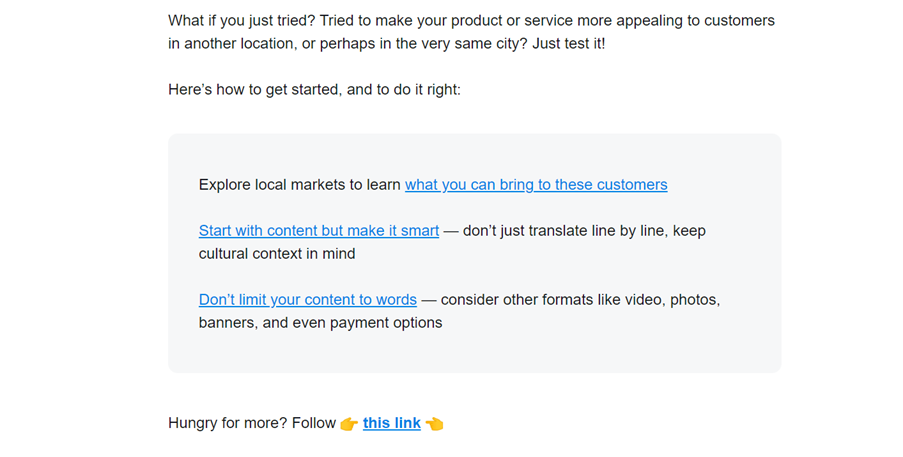
So, the reader knows right away that this email addresses the topic of content localization.
Getting straight to the point right from the start shows the reader that you value their time. In turn, you earn the reader’s respect for saving their time.
4. Write In a Conversational Tone
Imagine you are writing a letter to your mother or your cousin. How would you structure your message? What words would you use?
Essentially, your messaging should establish rapport with the reader. Therefore, keep your newsletters casual by using short sentences and bullet points.
Share real stories, ask questions, and use humor when appropriate.
If you are selling a complex product or service, stay away from technical jargon in your newsletter. Rather than writing about the product’s features and how it works, focus on how it can solve the reader’s problem.
5. Insert One Major Call-to-action
This is one of the most crucial newsletter writing tips.
One newsletter can have multiple Calls-To-Action (CTAs). You may ask the reader to forward your newsletter to their colleagues, read your blog posts, and download your ebook.
That does not mean all the CTAs need to be equally prominent. If that is the case, the reader will get confused as to what exactly you want them to do.
Instead, drive the reader’s attention to just one particular CTA, the most vital of them all. The rest of the CTAs in your newsletter can be options for the reader to check out when they have time.

This is Google Analytics’ newsletter, promoting their latest tagging solution. They have featured multiple CTAs throughout the email. However, by placing the “Get Your New Tag” CTA above the rest of the information, they have made it pretty clear what they want their readers to primarily do.
6. Keep Your Emails Short and Concise
Your readers are not supposed to spend their entire day reading your newsletter or decoding your message.
The very objective of sending a newsletter is to send your readers elsewhere. The destination might be your blog or your website where your readers can consume the whole content. Therefore, as mentioned earlier, get to the point of your email quickly.
You should also ensure that your newsletter discusses relevant content. For example, if your company sells furniture, your newsletter should not talk about politics, weather forecasts, or the latest fashion trends.
If your subscribers had wanted to hear about these, they would have subscribed to newsletters focusing strictly on these topics. Hence, the topics discussed in your newsletter should always be on-brand.
7. Keep Your Newsletter Design Minimal
Remember these design must-haves when writing a newsletter:
- Make sure the design of your newsletter is clean and has enough white space. White space helps minimize the cluttered feeling in a newsletter. As a result, it makes it easier for the reader to read through the newsletter and click on the right CTA or link.
- Do not forget to add a heading and your company’s logo at the top to capture the recipient’s attention.
- Images and videos should be high-quality. Each image should also have alt text to describe the image to the reader when the image is not visible.
- A responsive design will allow the recipients to read your newsletter properly on their mobile and tablet devices, too.
8. Be Consistent with Your Email Newsletters
People subscribe to a newsletter because they want to hear from your brand regularly. Nobody wants to receive an email newsletter from a company once in a blue moon.
Your subscribers expect you to deliver on your promise that you make when asking them to subscribe.
For example, if your customers have signed up for a monthly newsletter, they would expect to hear from you every month. For a weekly email newsletter, they want to get the latest news from you once a week. In this weekly newsletter case, sending them a newsletter once a month will not help you keep your promise.
The result? Disappointed customers.
Similarly, if they have signed up for a monthly newsletter, do not send it four times a week. They are bound to get annoyed, if you do so.
9. Allow People to Unsubscribe
To maintain an engaged subscriber list, you should make the “Unsubscribe” option available to all the newsletter readers.
Do not hide the unsubscribe button behind any image. Make it easily visible instead, so that the readers can opt out from receiving your newsletters whenever they want.
This will prevent your newsletter from being marked “Spam” by the readers when they do not wish to receive it anymore.

Take a look at the footer of The Washington Post’s email newsletter. The link to unsubscribe from their newsletters is clear and underlined. There is also an option for the reader to modify their email preferences, if they want to.
How often send out email newsletters
There’s no one-size-fits-all answer. It depends on your audience, content type and your ability to deliver value. Weekly is best for brands with regular updates, blog posts or offers — perfect for eCommerce, SaaS and content creators. Bi-weekly is a good middle ground if you don’t want to overwhelm your subscribers but still want to keep them engaged. Monthly is great for long-form content or updates especially in industries like consulting or thought leadership. Quarterly is good for major updates or reports but sending too infrequent can be forgotten. You can also use automated or triggered emails (like welcome sequences or cart reminders) which are essential for user engagement and don’t follow a schedule.
What to Consider Before Setting a Frequency?
Start by understanding your audience — are they opening your emails or tuning out? If engagement is low, scale back. Segment your list if needed so highly engaged users can get more frequent updates. Match your frequency to your content pipeline. For quick tips, go weekly. An for deep dives, go monthly. Be realistic about your capacity — quality matters more than quantity. Also email platforms reward consistency; regular sending helps avoid the spam folder. Lastly create a rhythm your audience can trust. If they expect your newsletter on Fridays, stick to it.
Pro Tips for Choosing the Right Frequency
Start with bi-weekly if you’re unsure — it’s manageable and sustainable. Track open and click-through rates to see how your audience responds. Don’t rely solely on scheduled sends; mix in automated flows like welcome emails. Repurpose your content so you’re not starting from scratch every time. And remember: newsletters should feel like a welcomed surprise not another task in someone’s inbox.
Can we Send Newsletters Through Gmail?
Yes, but Gmail is best for small groups and basic emails. It lacks advanced features like personalization, tracking, automation and compliance tools. If you only need to send a simple update to a few contacts, Gmail can work — just know its limits.
How to Send an Email Newsletter in Gmail?
There are multiple methods that can be used send email newsletters using Gmail.
1. Bcc Method: Write your newsletter in Gmail and add all recipients to the Bcc field. It’s fast and easy but lacks personalization and tracking. Gmail also limits sending to 500 (personal) or 2,000 (Workspace) emails per day.
2. Google Docs + Gmail: Design your newsletter in Google Docs, then copy-paste it into Gmail. It’s better formatted but pasted content can break and Gmail limitations still apply.
3. Gmail Layout Templates (Workspace only): Some Workspace users have access to built-in email layouts in Gmail. These are more visually appealing but limited in features and not available to all users.
4. Chrome Extensions (GMass, Mailmeteor): These tools add features like mail merge, tracking and scheduling directly into Gmail. They’re good for slightly larger lists but often require paid plans and access to your account — so use trusted tools only.
When Should we Avoid Gmail for Newsletters?
Gmail is good for small casual updates — but it’s not built for email marketing. You can’t track performance, manage large lists or automate campaigns. If you’re growing a brand or business Gmail will hold you back.
Why Use an Email Marketing Platform?
If you want to send branded, personalized and automated emails with detailed analytics switch to tools like Mailchimp, MailerLite, Brevo, or Kit (formerly ConvertKit). These platforms allow you to scale, track results and stay compliant. Most offer free plans for small lists and are built for long-term success.
Does Shopify have an email newsletter feature
Shopify does have a built-in email newsletter feature called Shopify Email which is a good starting point for many Shopify store owners. But for more advanced needs and scalability, exploring dedicated email marketing apps from the Shopify App Store is recommended.
Conclusion: Newsletter Writing Tips
We all receive newsletters from some brand or the other. Yet, you may not know how to write a newsletter email when it comes to creating a successful one for your own brand.
No worries! Reach out to the Content Writing Experts at MyTasker to start seeing results from your emails. They can help you understand your readers’ mindset and create personalized newsletters your audience will love.



